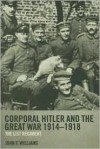Currently reading
OPERATION PAPERCLIP - NOT A PRETTY PICTURE BELOW THE SURFACE

Earlier this year, I attended a book reading by the author Anne Jacobsen about this subject, which was complete with a rather impressive slide presentation. What she said about Operation Paperclip that day not only induced me to buy this book later that week. But more importantly, it forever altered my previous view of Operation Paperclip, which, from the time I first became aware of it sometime in the 1980s, I had regarded as a wholly noble effort on the part of the U.S. government to locate, retrieve, and resettle in the U.S. in the immediate aftermath of the Second World War a remarkable group of talented German scientists, whose managerial and technical expertise played no small part in helping the U.S. forge ahead of the Soviet Union in the space race. In this regard, Wernher von Braun came to mind. As someone with memories of the Apollo space program, I admired him greatly.
Now, having read this rather weighty book, I will never see von Braun in the same light again. Not only had he been a member of the Nazi Party, he had also joined the SS sometime before the Second World War and had risen to the rank of Sturmbannführer (Major), heading the Mittelbau-Dora Planning Office (which was instrumental in the development and building --- with the use of slave labor from the concentration camps --- of the V2 rockets that Hitler unleashed against the Allies in 1944 and 1945). These facts were not only known by the U.S. government, but had either been downplayed by it or classified so that they would never come to light during von Braun's lifetime.
What's more: Operation Paperclip also had its extensions in Germany itself through "feeder programs" such as Artichoke in places like Camp King, where captured Soviet spies were interrogated. A significant number of the scientists, engineers, doctors, and technicians who figured prominently in Operation Paperclip had engaged in wartime activities that, by the standards set at Nuremberg, were war crimes. For example, live medical experiments (whose grisly details I won't go into here) carried out at Auschwitz, Dachau, and the women's concentration camp at Ravensbrück. Whenever possible, the U.S. government availed themselves of the services of these Germans, provided it (i.e. the U.S. government) could help them elude or survive any adverse publicity about their pasts that sometimes surfaced after the war. Cold War pressures and imperatives made these scientists, engineers, doctors, and technicians indispensable to U.S. security interests.
"For Operation Paperclip, moving a scientist from military custody to immigrant status required elaborate and devious preparation, but in the end the procedure proved to be infallible. Scientists in the southwestern or western United States, accompanied by military escort, were driven in an unmarked army jeep out of the country into Mexico either at Nuevo Laredo, Ciudad Juárez, or Tijuana. With him, each scientist carried two forms from the State Department, I-55 and I-255, each bearing a signature from the chief of the visa division and a proviso from the Joint Chiefs of Staff, Section 42.323 of Title 22, signifying that the visa holder was 'a person whose admission is highly desirable in the national interest.' The scientist also had with him a photograph of himself and a blood test warranting that the did not have any infectious diseases. After consulate approval, the scientist was then let back into the United States, no longer under military guard but as a legal U.S. immigrant in possession of a legal visa. The pathway toward citizenship had begun. If the scientist lived closer to the East Coast than the West Coast, he went through the same protocols, except that he would exit the United States into Canada instead of Mexico and reeenter through the consulate at Niagara Falls."
Reading this book wasn't easy because it demands that the reader make him/herself fully attentive to its contents. Nevertheless, it's well-worth the effort.













